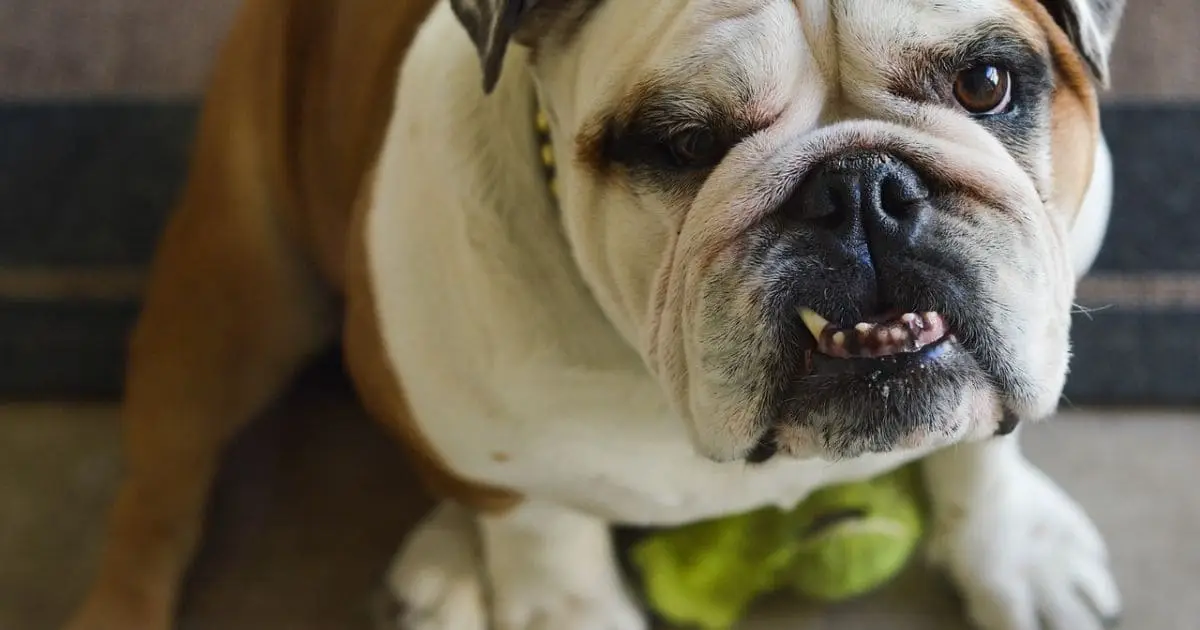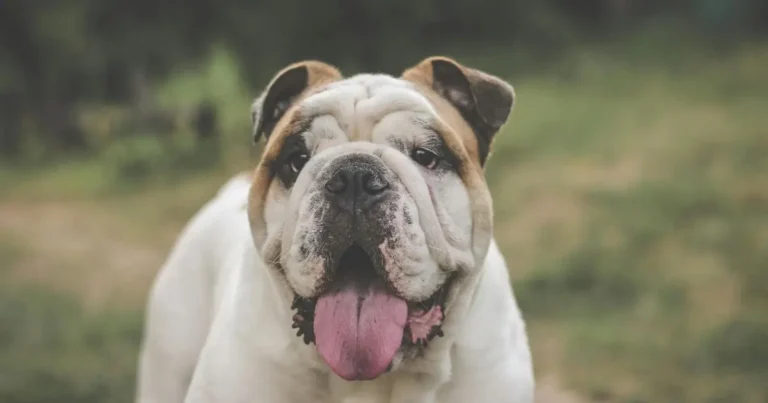Welcome to Loki & Nala Family

Table of Contents
If you own a dog, you might have come across dogs with underbites, a condition where the lower jaw extends beyond the upper jaw, potentially leading to dental and health issues. In this guide, we’ll dive into the causes, care strategies, and breeds most likely to develop underbites, giving you the knowledge to understand better and manage this condition for your dog’s overall health.
What is an Underbite in Dogs?
An underbite, or malocclusion, is a common dental issue in dogs. It happens when the lower jaw sticks out more than the upper jaw. This makes the lower teeth go past the upper teeth, giving an “undershot” look.
It’s essential to know the difference between an underbite and an overbite. An overbite is when the upper jaw is longer than the lower jaw. Both can cause dental problems if not treated.
Definition and Explanation
In a normal dog bite, the upper teeth slightly cover the lower teeth. This makes for a balanced bite. However, dogs with an underbite have a longer lower jaw or faster jaw growth.
This makes the lower teeth stick out more than the upper teeth. This misalignment can cause dental and oral health issues if not treated.
Difference Between Underbite and Overbite
An underbite is when the lower jaw is longer than the upper jaw. An overbite is the opposite, with the upper jaw longer. Both can lead to dental problems.
It’s key to get a vet’s help to figure out and treat your dog’s bite issue correctly.
Causes of Underbites in Dogs
Pet owners and vets need to know why dogs get underbites. Underbites, or malocclusions, come from genetics and growth issues. These happen as dogs grow and mature.
Genetic Factors
Genetics are a big reason for underbites in dogs. Breeds like Pugs, Bulldogs, and Boston Terriers often get them. Their short, wide muzzles and big lower jaws help create an underbite.
Developmental Issues
Developmental problems also cause underbites. Issues like teeth not coming in the right, jaw not lining up, and not enough nutrients can lead to them. These problems can happen at any age, from puppyhood to adulthood.
Knowing why dogs get underbites helps owners and vets take care of them. This ensures dogs stay healthy and happy.
Breeds Prone to Underbites
Some dog breeds are more likely to have underbites. This is because of their physical traits and genes. Knowing which breeds are at risk can help owners keep their pets’ teeth healthy. Here are some dog breeds that often have underbites:
- Bulldogs
- Boston Terriers
- Pugs
- English Bulldogs
Bulldogs are often seen with underbites because of their face shape. Pugs, with their short noses, also face this problem. Boston Terriers and English Bulldogs, with their similar looks, are also at risk.
| Breed | Susceptibility to Underbites |
| Bulldog | High |
| Boston Terrier | Moderate |
| Pug | High |
| English Bulldog | High |
Knowing which breeds are more likely to have underbites is essential. It helps owners watch their dogs’ teeth closely. If problems show up, seeing a vet quickly is key. This can prevent more significant health issues later on.
Caring for Dogs with an Underbite
It’s essential to take good care of dogs with underbites. This ensures they are comfortable, have healthy teeth, and are overall well. A detailed plan is needed to handle the unique problems caused by this condition.
Dental Care and Hygiene
Regular vet visits and dental cleanings are key for dogs with underbites. Their jaw issues make it hard to keep their teeth clean. This can lead to plaque, tartar, and gum disease.
At home, brushing their teeth and using dental treats can help. These steps are crucial for their dental health.
Diet and Nutrition
Dogs with underbites may find it hard to eat some foods. They need a soft, easy-to-chew diet. Talk to your vet to find the best food and feeding plan for your dog.
This way, your dog gets the nutrients they need without pain. With the proper care, dogs with underbites can live happy, healthy lives.
Potential Health Problems Associated with Underbites
An underbite in dogs might seem cute, but it can cause serious health issues. It’s important to know about these problems to keep your dog healthy.
One big worry is how an underbite affects eating and chewing. It can make it hard for dogs to eat right, leading to dental problems.
- Dental problems: Underbites can lead to tooth crowding, gum disease, and tooth decay. These issues are painful and need a lot of vet care.
- Respiratory issues: Underbites can also make breathing hard, especially in flat-faced breeds. This can cause breathing problems and even sleep apnea.
- Increased risk of infection: The jaw misalignment can trap food and bacteria. This raises the chance of infections like abscesses or gum disease.
It’s key to take your dog with an underbite to the vet regularly. They need dental cleanings to stay healthy. Early care and management can prevent many problems and keep your dog happy and healthy for years.
Conclusion
Understanding underbites in dogs is key to their health and happiness. Knowing the causes and how to care for them is crucial. This knowledge helps you manage your dog’s underbite and prevent health issues.
Regular vet visits, good dental care, and a proper diet are vital. These steps ensure your dog with an underbite gets the best care. This can significantly improve their life.
Recognizing signs and symptoms of underbites is essential. Knowing the causes helps you manage your dog’s condition better. A comprehensive care plan can significantly improve your dog’s well-being.
Staying informed and proactive is essential. This helps your dog thrive despite an underbite. It’s a big step towards their happiness and health.
Pet owners and vets need to work together. This teamwork ensures dogs with underbites get the care they need. It improves their life quality and promotes their health and happiness.
You can also read :
Blue Alsatian Dog: Traits, Temperament, and Essential Care Guide
Golden Mountain Dog: The Ultimate Guide to This Friendly Hybrid Breed









